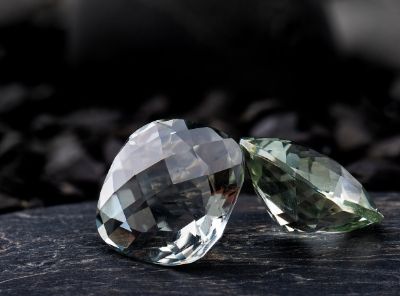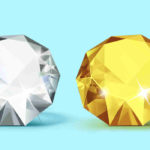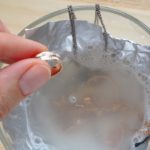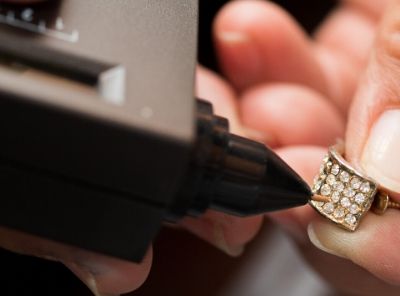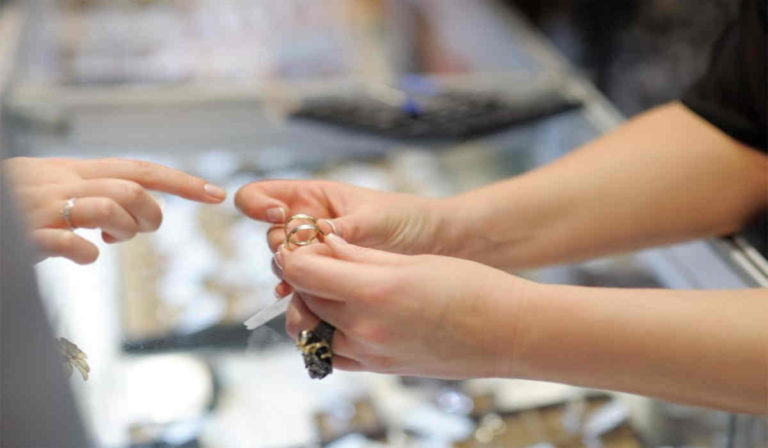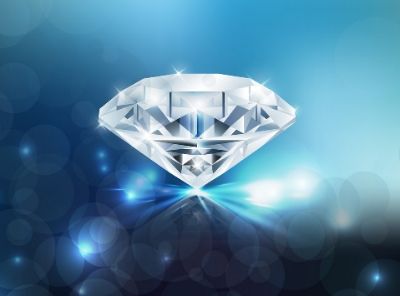The shimmer and the brilliance that you see and regard in a diamond are because of the cuts that are made as facets. Let us find out how many different types and how are diamonds cut possible till yet,
Why is Diamond cut?
When diamonds are mined from the earth, they are rough and unrefined. It takes a lot of processing and time to make a rough diamond into the diamond we know. Diamond Cutting basically is a practice of cutting a rough stone into a faceted gem. Diamond cutting is not a layman’s job and requires efficiency and enough knowledge of the procedure, tools, equipment, and techniques. If you get into the depth of technique, there are basic two elements to take care of- the shape and the second relates to the specific quality of cut within the shape. The quality and price will vary greatly based on cut quality.
How are diamonds cut?
The diamond cutting process includes many steps: planning, cleaving or sawing, bruting, polishing and final inspection. Let us look at the processes step by step in more details,
– Cleaving and Sawing: Cleaving is the separation of the rough diamond into separate pieces, these separate pieces need to be finished as separate gems. Sawing is the process of using cutting in the diamond by a diamond saw or laser cutting into separate pieces.
– Bruting: Bruting is a process wherein two diamonds are set into spinning axis pans turning in opposite directions which are then set to grind against each other to shape each diamond into a round shape. This is also known as girdling.
– Polishing: In this process, facets are cut as you see in the diamonds and final polishing is performed. This step gives the diamond its brilliant sparkle that we see.
– Final Inspection: This is the final stage of diamond cutting, it involves thoroughly cleaning the diamond in acids and examining the diamond to see whether it meets the standards of the manufacturer.
Types of diamond cuts
There are categories in types of diamond cuts too. Various cuts fall under one of the three categories listed here,
Brilliant, Step and Mixed Styles
Brilliant cuts have many facets that are arranged in such a way as to maximize the stone’s shimmer and brilliance. The classic round cut is a brilliant cut.
Step Cuts have facets that are parallel to each other and to the stone’s edge. They do not enhance the brilliance of the diamond, the lines are long and stretched.
Mixed Cuts have the feature of both brilliant and steps cut. The radiant cut is a mixed type cut.
Fancy Cuts
Fancy cuts are brilliant cuts that are different from round brilliant cuts. Such cuts include pear, marquise, heart, oval and others.
Cut Grading
There are different grading scales for the diamond cut. In general, a cut is graded according to how close its proportions are to those of an accepted benchmark.
Common Types of Cuts and Shapes
Princess-Cut Diamond
Princess cut is very similar to the round cut diamonds, it is also a brilliant-cut diamond but has a rectangular outline instead of around one. It is not as brilliant as the round cut but is a good alternative to it.
Emerald or Baguette and Asscher Cut Diamond
The emerald cut is a rectangular step cut with very trimmed edges. Asscher Cut is the square variation of the rectangular emerald cut. They differ only in the outline, the shape and arrangements remain the same. The brilliance is very less than brilliant-cut diamonds and so any perfection is very clearly visible in this cut.
Cushion-Cut Diamond
Cushion cut diamonds are one of the most trendy cuts. They are rectangular or square with the corners rounded making the stone she look like a pillow- thus the name cushion cut. They belong to the brilliant category group.
Marquise-Cut Diamond
Marquise has two pointed ends and an oval looking outline. These sharp points aren’t considered very safe as they constantly run in the danger of chipping and should be protected properly by the base metal.
Rose Cut Diamond
Many know it by the Jennifer Aniston ring, ever since Theroux proposed Aniston with a brilliant rose-cut diamond- people have been heading their heels over it. They have a very unique facet cut, it resembles the flower rose. They have a flat base and the crown is formed in a faceted dome. This vintage diamond cut has 3 to 24 facets, each with its own singled shimmer.
Radiant Cut Diamond
Radiant Cut is also a brilliantly cut diamond, it has a rectangular or square shape with truncated corners. They have some characteristics of the emerald cut and thus many times it is referred to as the mixed cut.
Oval-Cut Diamond
Oval cut can be called as the modified version of the round cut. It is a good choice if you want to create the impression of length. It belongs to the category of brilliant cuts diamond and is an excellent choice if you are looking for something unconventional yet brilliant.
Pear-Cut Diamond
The pear shape is the one where one end is pointed, making the shape of the diamond look like a pear. They combine features of the marquise cut and the oval cut. You must keep extra care of the sharp end as it is very vulnerable to chipping.
Heart Cut Diamond
Heart Cut Diamonds look very similar to the pear cut but the rounded end of a heart-shaped diamond has a cleft. It is in the shape of a heart as the name suggests. The left and the right parts are symmetrical.
Round Cut Diamond
The round cut is the most popular diamond cut all around the world. This cut is specifically cut to maximize brilliance and because of the many cuts, the flaws and the yellow tints and other inclusions are less visible than in other cuts. It is also called as the classic diamond cut.
Old Mine Cut
The old mine was perhaps the most common cut till the late 19th century. Mostly found in the Georgian and Victorian era jewelry, you will recognize an old mine cut by its squarish shape, it has 58 facets like the modern-day round brilliant cut diamond. It has different diamond proportions and typically has a smaller table, larger culet, and a higher crown.
Phoenix Cut Diamond
Phoenix Cut is octagonal and similar in shape to emerald and a radiant cut. These cuts have 48-50 and 70 facets whereas Phoenix cut has perfected 89 facets. This increased number of facets is to give the diamond more fire and brilliance as symbolic to Phoenix.
The most expensive cut is, of course, the round cut diamond. There are many facets in it ranging from 50-80. The number of facets determines the brilliance or shine of the diamond. It also determines the cost of the diamond.
What is a Diamond Cut Alloy Wheel?
Corrosion in diamond-cut wheels is very common, just by applying lacquer to a polished surface simply defies gravity. It is very difficult to achieve a long-lasting finish when applying lacquer to a shiny surface, small stone chips allow water in behind the lacquer and in time this lacquer deteriorates and appears cloudy. Diamond cutting involves removing a thin layer of alloy from the wheel using specialist lathing equipment. It needs to be refurbished a number of times because a lot of alloys is eventually removed.
Source: Jewelry Notes
FAQs
Q 1 What are the types of diamond cuts?
Brilliant cut, Step cut, Mixed Styles, Fancy cuts and Cut grading.
Q 2 What are the best diamond common types, cuts, and shapes?
Princess-cut diamond, Cushion-cut diamond, and, Radiant cut diamond is the best diamond common types, cuts, and shapes.
Q 3 Which diamond cut has the highest facets?
Phoenix cut diamond has the 89 highest facets.

